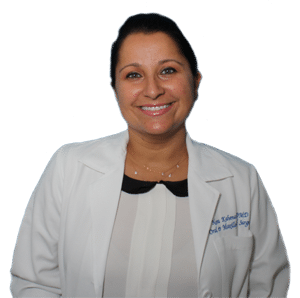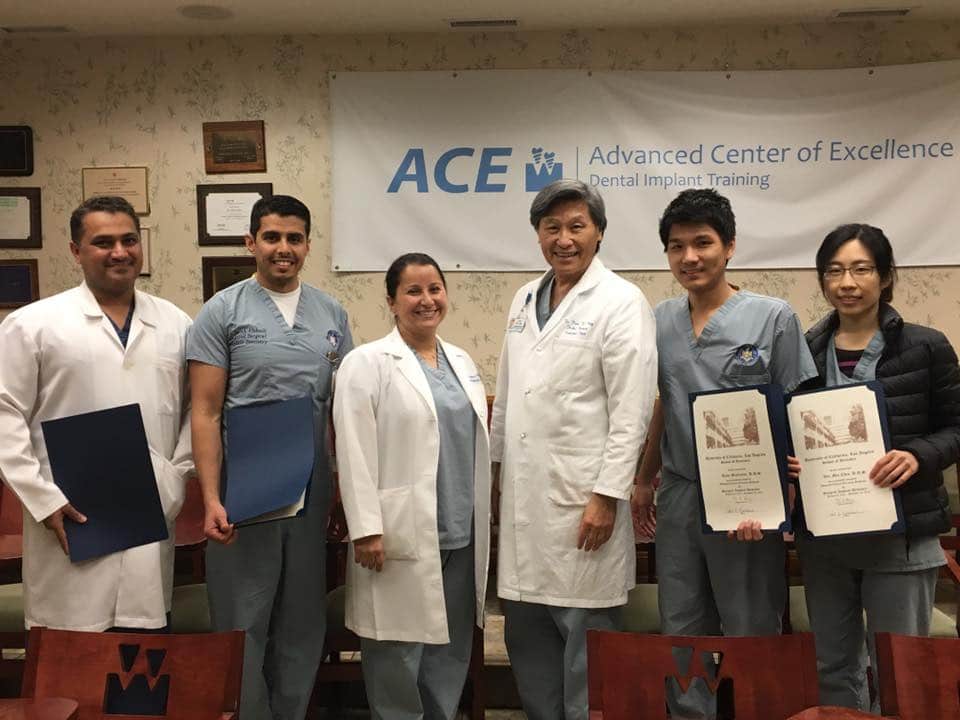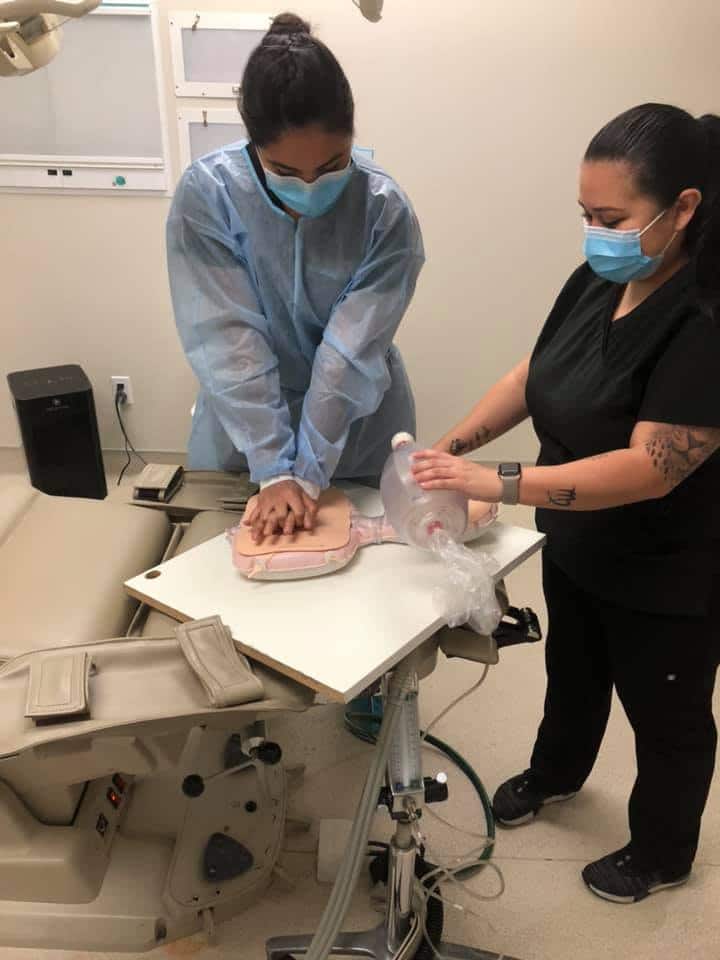Dr. Nora Kahenasa began her education in sunny southern California at the University of California, Irvine, where she received her Bachelor of Science in Biological Sciences in 1998. She then continued her education in sunny Florida where she earned her degree as a Doctor of Dental Medicine at Nova Southeastern University. Dr. Kahenasa remained at Nova Southeastern University to complete her 12 years of education to become an Oral and Maxillofacial Surgeon. Currently, Dr. Kahenasa is board certifed by the American Board of Oral and Maxillofacial surgery and part-time faculty at the Oral and Maxillofacial Surgery clinic in the UCLA School of Dentistry, where she is fortunate to be able to fulfill her passion for teaching by training her future colleagues. Dr. Kahenasa is also in private practice in the Los Angeles area where she performs oral and maxillofacial surgery with the absolute safety and comfort of her patients in mind.
Dr. Kahenasa is qualified and experienced in the full scope of Oral and Maxillofacial Surgery including: removal of wisdom teeth and dental extractions, dental implants and bone grafting, orthognathic surgery including jaw and chin reconstruction, TMJ evaluation and surgery, facial trauma and reconstruction, and, the diagnosis and treatment of oral pathology including benign and malignant tumors of the oral and maxillofacial region. Dr. Kahenasa is dedicated to keeping herself constantly updated on new and innovative techniques in oral and maxillofacial surgery to assure the best treatment for each patient and her ultimate goal is to provide the utmost care in a safe and friendly environment while always keeping the patient’s comfort her top priority.
Dental implants :

Statistics show that 69% of adults ages 35 to 44 have lost at least one permanent tooth to an accident, gum disease, a failed root canal or tooth decay. Furthermore, by age 74, 26% of adults have lost all of their permanent teeth. (www.aaoms.org)
Twenty years ago, these patients would have had no alternative but to employ a fixed bridge or “flipper”/removable denture to restore their ability to eat, speak clearly and smile. Fixed bridges often affect adjacent healthy teeth, which need to be cut down to accommodate the bridge.
Missing teeth for long periods of time result in loss of bone in the jaw. Full or partial dentures sit on the gums, causing pressure on the underlying bone, which may accelerate bone loss:
 Today there is another option for patients who are missing permanent teeth. Rather than resting on the gum line like removable dentures, or using adjacent teeth as anchors like fixed bridges, dental implants are long-term replacements that Dr. Moy and Dr. Kahenasa can surgically place in the jawbone. Composed of titanium metal that integrates with the jawbone, through a process called “osseointegration,” dental implants never slip or make embarrassing noises that advertise the fact that you have “false teeth”. They also will not decay like teeth anchoring fixed bridges. If properly cared for, dental implants can last a lifetime and typically have a 95% success rate at the time of placement.
Today there is another option for patients who are missing permanent teeth. Rather than resting on the gum line like removable dentures, or using adjacent teeth as anchors like fixed bridges, dental implants are long-term replacements that Dr. Moy and Dr. Kahenasa can surgically place in the jawbone. Composed of titanium metal that integrates with the jawbone, through a process called “osseointegration,” dental implants never slip or make embarrassing noises that advertise the fact that you have “false teeth”. They also will not decay like teeth anchoring fixed bridges. If properly cared for, dental implants can last a lifetime and typically have a 95% success rate at the time of placement.
Anatomy of dental implant :
 A dental implant designed to replace a single tooth is composed of three parts: the titanium implant that fuses with the jawbone; the abutment, which fits over the portion of the implant that protrudes from the gum line; and the crown, which is created by a prosthodontist or dentist and fitted onto the abutment for a natural appearance.
A dental implant designed to replace a single tooth is composed of three parts: the titanium implant that fuses with the jawbone; the abutment, which fits over the portion of the implant that protrudes from the gum line; and the crown, which is created by a prosthodontist or dentist and fitted onto the abutment for a natural appearance.
Dental implants are a team effort :
 A successful implant requires that you (the patient), your dentist (who makes the crown or denture) and Dr. Moy and Dr. Kahenasa (who does the surgery for implant preparation and placement) are working closely together and responsible for the ultimate success of the implant. Dr. Moy and Dr. Kahenasa will work closely with your dentist and follow a careful treatment plan based on your needs. You, as the dental implant patient, are a very important part of this team since it will be your responsibility to maintain the implant once it is placed. In some cases, the dental implant can even be placed at the same time as the tooth extraction (“immediate” placement). We will discuss all of your surgical and anesthetic options following a consultation that includes a comprehensive examination, x-rays or CT scan, and, treatment planning discussions with your dentist.
A successful implant requires that you (the patient), your dentist (who makes the crown or denture) and Dr. Moy and Dr. Kahenasa (who does the surgery for implant preparation and placement) are working closely together and responsible for the ultimate success of the implant. Dr. Moy and Dr. Kahenasa will work closely with your dentist and follow a careful treatment plan based on your needs. You, as the dental implant patient, are a very important part of this team since it will be your responsibility to maintain the implant once it is placed. In some cases, the dental implant can even be placed at the same time as the tooth extraction (“immediate” placement). We will discuss all of your surgical and anesthetic options following a consultation that includes a comprehensive examination, x-rays or CT scan, and, treatment planning discussions with your dentist.





